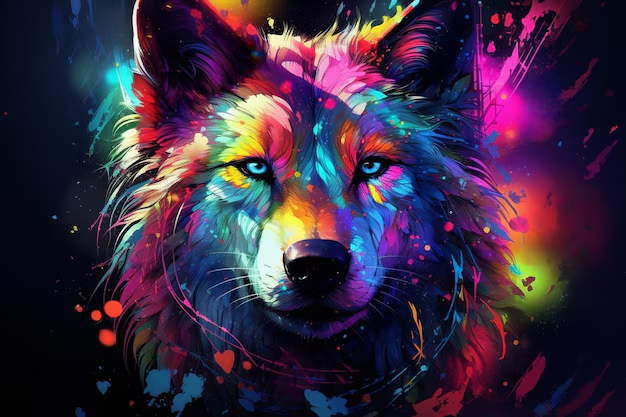Artificial Intelligence (AI) has been reshaping various industries, and one name that has been gaining traction recently is Renderwolf AI. For those unfamiliar, this game-changing tool is a new entrant in the world of AI-powered design and rendering solutions. It’s a tool designed to revolutionize the way designers, architects, game developers, and other professionals approach 3D rendering and visualization tasks. In this post, we will cover everything you need to know about Renderwolf AI, including its features, applications, advantages, and potential future developments.
What is Renderwolf AI?
It is a cutting-edge rendering software powered by artificial intelligence. It aims to simplify and accelerate the rendering process, which is often time-consuming and computationally intensive. With Renderwolf AI, users can create high-quality 3D images, animations, and visual effects more efficiently, thanks to its AI-driven algorithms. Unlike traditional rendering tools that rely heavily on manual settings and adjustments, it leverages machine learning to optimize rendering parameters automatically, providing faster results without compromising quality.
You may also read How to Use AI Writing Assistants for Content Creation.
How Renderwolf AI Works
It operates by employing advanced machine learning techniques, specifically in areas like neural networks and deep learning. These technologies enable the software to analyze vast amounts of data, learn from it, and make intelligent decisions during the rendering process. Here’s a breakdown of how Renderwolf AI functions:
- Data Analysis and Training: It is trained on a diverse dataset comprising thousands of images, textures, materials, and scenes. This extensive training allows it to recognize patterns, understand lighting dynamics, and replicate realistic textures with high accuracy.
- Automated Rendering: Once a 3D model or scene is uploaded into the software, Renderwolf AI automatically adjusts the rendering parameters. It considers factors such as lighting, shadows, reflections, and refractions to produce a high-quality output.
- Real-Time Feedback: It provides real-time feedback during the rendering process, allowing users to see how different changes affect the final result instantly. This feature is particularly useful for making quick adjustments without starting the entire rendering process again.
- Post-Processing Capabilities: The software includes advanced post-processing tools powered by AI to further enhance the final output. These tools can automatically adjust brightness, contrast, and color balance, or add visual effects to achieve the desired look.
Key Features of Renderwolf AI
Renderwolf AI offers a range of features that make it a powerful tool for professionals involved in 3D modeling, animation, and visualization. Some of its standout features include:
- AI-Powered Rendering Optimization: Automatically optimizes rendering settings for faster and more efficient output.
- User-Friendly Interface: Designed to be accessible for both beginners and experienced professionals, with intuitive controls and customizable settings.
- High-Quality Output: Capable of producing photorealistic images and animations with detailed textures and lighting effects.
- Cloud-Based Rendering: Provides cloud-based rendering services, allowing users to utilize powerful remote servers, thereby reducing local hardware requirements.
- Cross-Platform Compatibility: Works seamlessly across multiple platforms, including Windows, MacOS, and Linux.
- Integration with Popular Design Tools: Compatible with leading 3D modeling and design software like Blender, Autodesk Maya, 3ds Max, and Cinema 4D.
- Cost-Effective: Offers flexible pricing models, including subscription-based services, pay-per-use options, and enterprise solutions.
Applications of Renderwolf AI
Renderwolf AI is a versatile tool with applications across various industries. Here are some of the most common use cases:
1. Architectural Visualization
Architects and designers can use Renderwolf AI to create photorealistic renderings of buildings, interiors, and landscapes. The software’s AI-driven optimization allows for faster turnaround times, enabling architects to present their designs to clients more quickly. Additionally, the real-time feedback feature allows for rapid iteration, making it easier to experiment with different design elements, materials, and lighting scenarios.
2. Game Development
In game development, rendering is a crucial part of the pipeline. Renderwolf AI can significantly speed up this process by automating many of the tasks that would otherwise require manual adjustment. Game developers can use the software to create realistic environments, characters, and visual effects more efficiently, reducing production time and costs.
3. Film and Animation
The film and animation industries also stand to benefit from Renderwolf AI. The software’s ability to render high-quality visual effects and animations quickly makes it an invaluable tool for visual effects studios and animators. It can handle complex scenes with multiple characters, intricate lighting setups, and detailed textures, providing cinematic-quality results in less time.
4. Product Design and Advertising
Product designers and advertising agencies often rely on high-quality 3D renderings to showcase their products. Renderwolf AI makes it easier to create stunning visual content that can be used for marketing materials, online catalogs, and promotional videos. The software’s AI capabilities ensure that the final output is visually appealing and accurate to the designer’s specifications.
5. Virtual Reality (VR) and Augmented Reality (AR) Development
Renderwolf AI’s advanced rendering capabilities make it a perfect fit for VR and AR development. By producing high-quality, photorealistic 3D models and environments, it enhances the immersive experience for users. Developers can use the software to create realistic simulations, training programs, and interactive applications.
Top AI Tools to Supercharge Your Daily Workflow you also know.

Benefits of Using Renderwolf AI
Renderwolf AI offers numerous benefits, making it a preferred choice for professionals in various fields:
- Time Efficiency: The AI-driven automation significantly reduces the time required for rendering, allowing professionals to focus on other aspects of their projects.
- Cost Savings: By reducing the time and resources needed for rendering, it helps lower overall production costs.
- Accessibility: The user-friendly interface makes it accessible to both experienced professionals and beginners, enabling more people to leverage its capabilities.
- Flexibility: With its cloud-based rendering option, users can choose between local and remote rendering based on their needs and available resources.
- Scalability: Renderwolf AI’s cloud-based infrastructure allows it to handle large-scale projects without compromising performance or quality.
- Consistency: The software ensures consistent quality across multiple renders, reducing the chances of errors and discrepancies.
Limitations of Renderwolf AI
While Renderwolf AI offers several advantages, there are also some limitations to consider:
- Dependence on Internet Connectivity: The cloud-based rendering option requires a stable internet connection, which may not be ideal for all users.
- Learning Curve: Although the interface is designed to be user-friendly, there may still be a learning curve for users new to AI-powered rendering tools.
- Limited Offline Functionality: Some features, particularly those related to cloud rendering, may be unavailable without an internet connection.
- Hardware Requirements: While it reduces the need for high-end local hardware, users may still need a moderately powerful system for smooth performance.
Comparing Renderwolf AI with Other Rendering Tools
To better understand where Renderwolf AI stands in the market, it’s essential to compare it with other popular rendering tools like V-Ray, Arnold, and OctaneRender.
| Feature | Renderwolf AI | V-Ray | Arnold | OctaneRender |
|---|---|---|---|---|
| AI Optimization | Yes | No | Limited | No |
| Real-Time Feedback | Yes | No | Yes | Yes |
| Cloud Rendering | Yes | Yes | Yes | Yes |
| User-Friendliness | High | Moderate | Low | Moderate |
| Cost | Flexible | Subscription-Based | Pay-Per-Use | Subscription-Based |
| Platform Compatibility | Windows, MacOS, Linux | Windows, MacOS, Linux | Windows, MacOS, Linux | Windows, MacOS |
| Integration with Software | High (Supports multiple platforms) | High | High | Moderate |
Potential Future Developments for Renderwolf AI
Renderwolf AI is still relatively new, but it has a promising future. Here are some potential developments we might see:
- Enhanced AI Capabilities: Further advancements in AI could lead to even more intelligent rendering algorithms, reducing rendering times and improving output quality.
- Expanded Integration Options: As it grows, it may integrate with more design tools and platforms, providing even greater flexibility for users.
- Advanced Customization Features: Future versions may offer more advanced customization options, allowing users to fine-tune rendering settings according to their specific needs.
- Broader Application Range: Beyond traditional uses, it might expand into new fields like medical visualization, scientific research, and more.
How to Get Started with Renderwolf AI
For those interested in using Renderwolf AI, here are the steps to get started:
- Sign Up: Visit the Renderwolf AI website and sign up for an account. Choose the plan that best fits your needs – whether it’s a subscription-based model, pay-per-use, or an enterprise solution.
- Download and Install: Download the software and follow the installation instructions. Ensure your system meets the minimum hardware and software requirements.
- Learn the Basics: Familiarize yourself with the interface and basic features. There are numerous tutorials and guides available on the website and other online platforms to help you get started.
- Start Rendering: Import your 3D models or scenes and start experimenting with the various tools and features. Use the real-time feedback to make adjustments and optimize your output.
- Leverage Community Resources: Join the Renderwolf AI user community to share tips, ask questions, and learn from other professionals.
Conclusion
Renderwolf AI is an innovative tool that brings the power of AI to the world of 3D rendering. With its advanced features, ease of use, and cost-effective pricing models, it offers significant benefits to professionals across various industries. While there are some limitations to consider, the potential for future developments makes it a compelling choice for anyone looking to enhance their rendering workflow.
Whether you’re an architect, game developer, filmmaker, or product designer, it has something to offer. By reducing rendering times and costs, it allows you to focus on what truly matters – creating stunning visual content that captivates and engages your audience.

